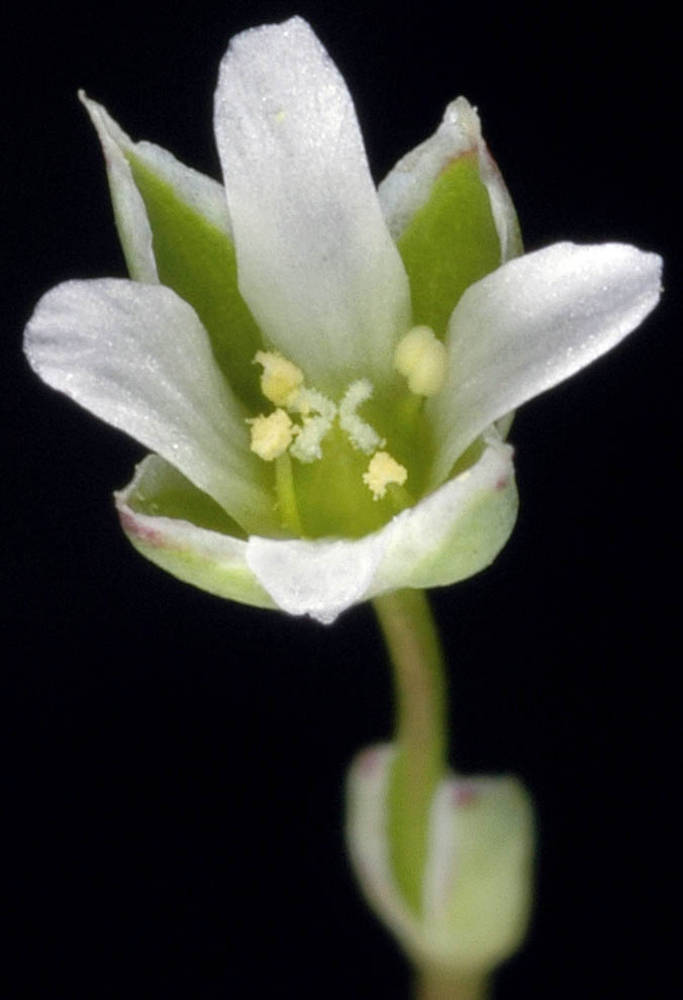
Stems 2.5–15 cm, simple or sparingly branched above, glabrous, glaucous.
Leaves basal leaves oblanceolate, 5–18 mm; cauline leaves linear to linear-lanceolate, 3–12 mm.
Flowers sepals lanceolate, 3.8–7 mm; petals lanceolate, 2.5–6 mm, tips blunt to rounded.
Fruits straight, 5–7 mm.
2n=38.
Roadsides, moist meadows, rocky flats. Flowering Apr–May. 0–400 m. Casc, ECas, Est, Sisk, WV. CA, WA; north to British Columbia, IL, MT, SC; Europe. Exotic.
First collected in the 1830s in Baltimore and Philadelphia, most Moenchia erecta collections in North America have been made since the late 1940s (including the first in Oregon in 1948) from widely scattered sites in the Pacific Northwest.
as described under Moenchia erecta ssp. erecta
Stems 2.5-19 cm, glabrous, glaucous. Leaf blades 5-18 mm. Pedicels 1-7.6 cm. Petals ca. 2- 3 times as long as sepals. Capsules 5-6.5 mm, usually 5-1 times as long as sepals. 2n = 38 (Europe).Flowering spring. Lawns, disturbed areas; 0-600 m; introduced; B.C.; Calif., Ill., Oreg., S.C., Wash.; Europe.Moenchia erecta is known in widely scattered areas of western North America; its occurrence in the east is limited. Historical records from the 1830s exist as specimens collected at Baltimore, Maryland, and Philadelphia, Pennsylvania; the species has not been recollected in either place since. The Illinois population, first documented in 1993, is scattered over an acre of a mowed field in a city park.